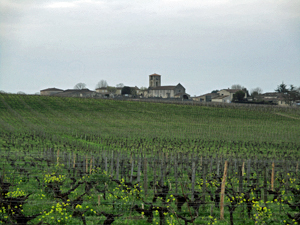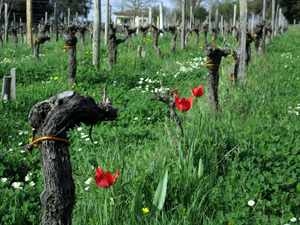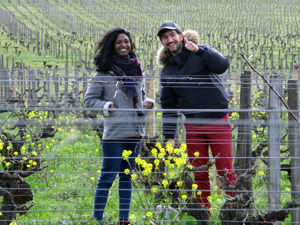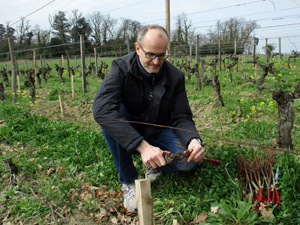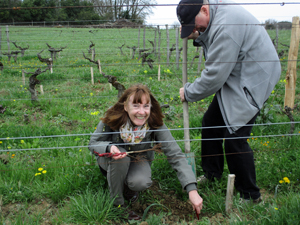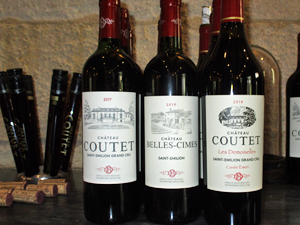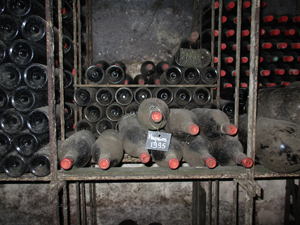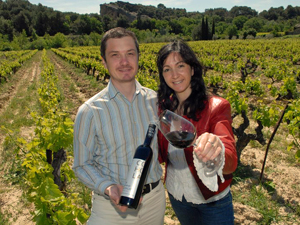We welcomed some of the Gourmet Odyssey Wine Experience apprentice wine-makers to Domaine Chapelle in the Burgundy village of Santenay. The objective of the day was to learn about all of the work in the vineyard to produce the best grapes come harvest time.
After a short introduction to the history of the family and the Burgundy wines from Jean-François, the owner of the winery, his son, Simon, led us out into the vineyard. Simon is in the process of taking over the reins at the winery as Jean-François approaches retirement.
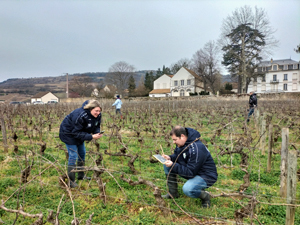
The first contact with our adopted vines brought many smiles, laughter, and some great photos to be entered into the “My Vine” photo competition!
It was then time to get down to more serious matters, and Simon began to explain the work carried out during the various vegetative phases of the vines growth.
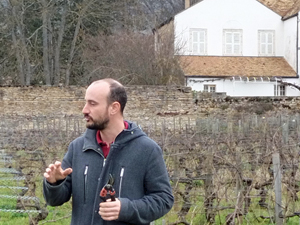
At this time of year, we are busy with the last of the pruning and pulling away the cut branches that have remained stuck between the training wires.
Simon showed us the two different pruning methods used in the vineyards. The cordon de royat used for the pinot noir vines involves keeping three or four spurs, each with two nodes, from one of last year’s branches.
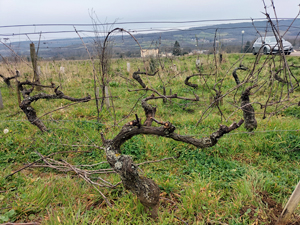
And the Guyot pruning method is used for the chardonnay vines, leaving just one long branch with 5 to 6 nodes, that will then be folded and attached to the lower training wire.
In both cases, this year’s fruit-bearing branches will grow vertically from the nodes, and will be supported between the training wires once the growth is sufficient around May time.
Pruning is a very technically demanding task, and is only carried out by the winery’s permanent staff. A team of seasonal workers will then pass through the vineyards, pulling away the cut branches caught between the wires and burning them as they go.
We had a go at pulling away the old branches ourselves, and quickly understood the difficulty of this manual job. As the vine is from the creeper family, it has lots of tendrils that wrap around the training wires, making it hard to pull them free. The not so clement weather added to the difficulty, as we found out!
We were happy to return to the shelter of the cellar after our vineyard experience, and enjoyed a typical Burgundy aperitif with a glass of Santenay Village white and some delicious gougères!
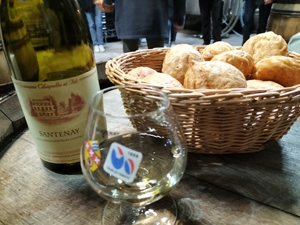
A typical Burgundy lunch of boeuf bourguignon followed, paired with Ladoix, Santeany Clos des Cornières, and Santenay Gravières Premier Cru wines
Lunch is always a very convivial moment, and it’s always a little complicated to get going again in the afternoon! We altered the programme slightly due to the weather, to visit the cellar where Simon explained the different vinification and ageing phases. We also visited the magnificent vaulted cellar underneath the winery that is typical of the Burgundy region.
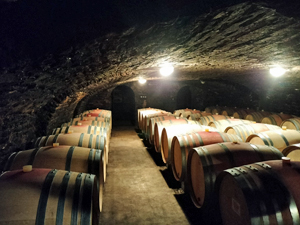
It was a good introduction to the Vinification Experience Day that some of the clients will be following up with. And for those who wish to, it’s also possible to add the day.
We had a great day, and hope to see you again soon for another wine experience day.



